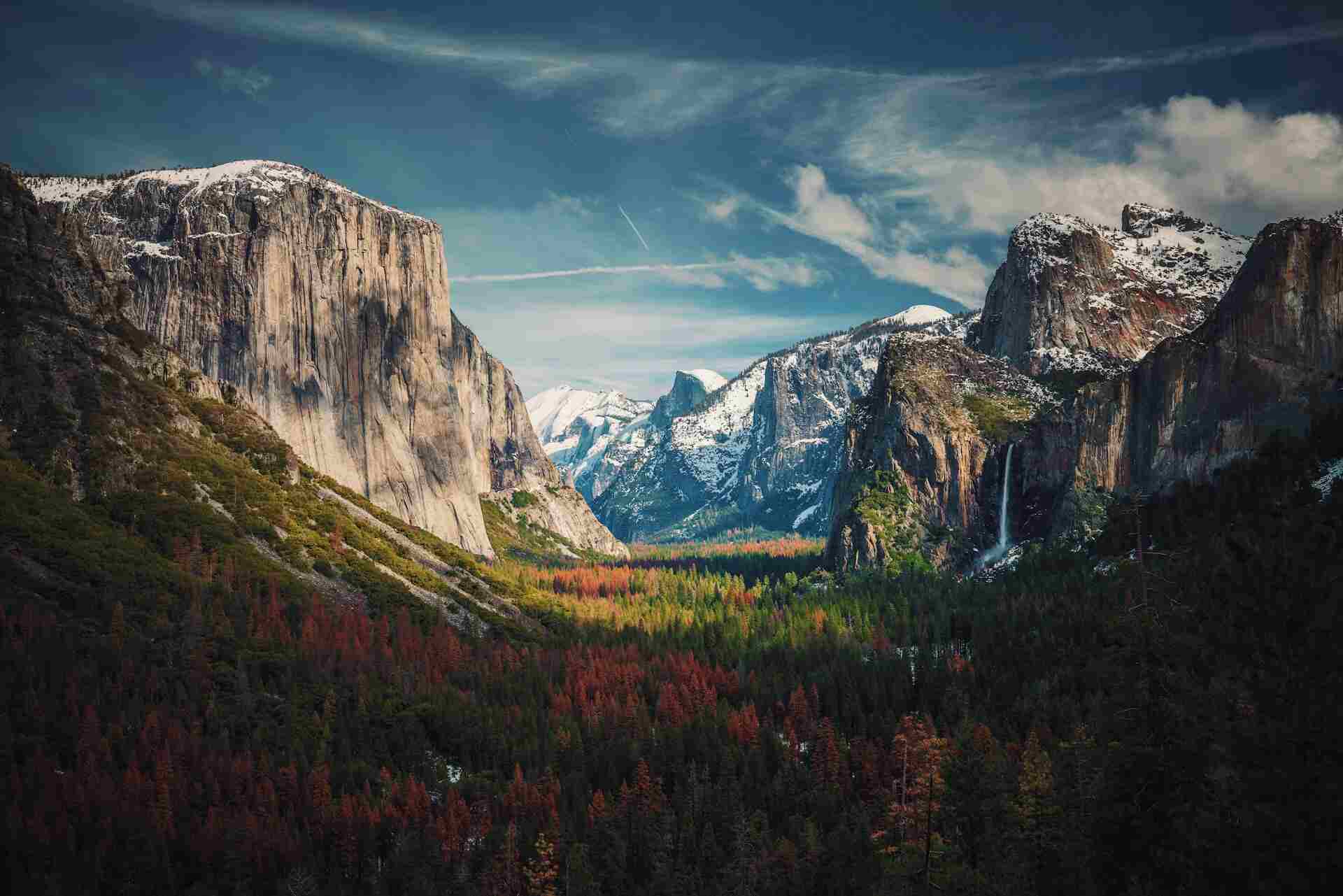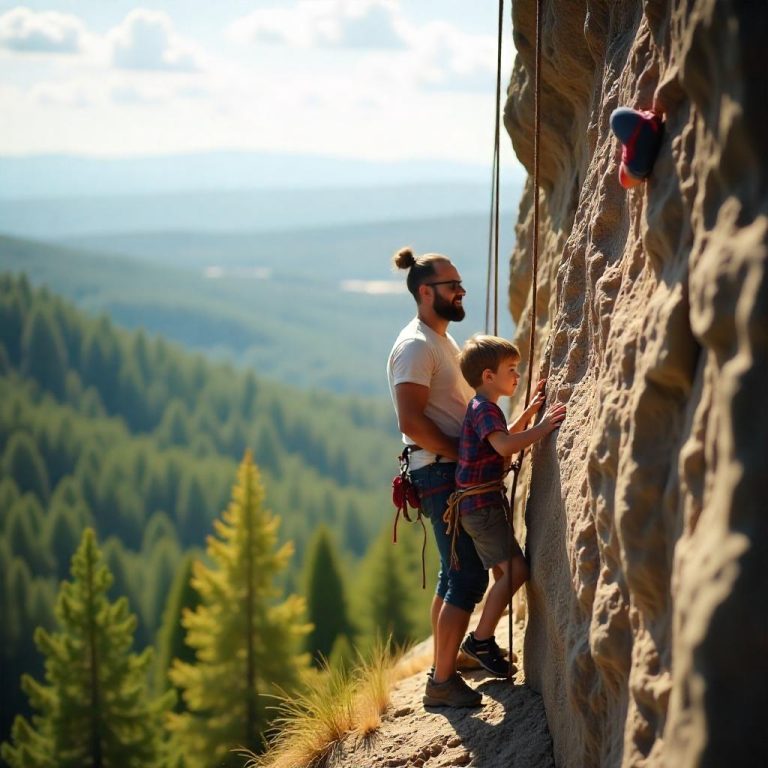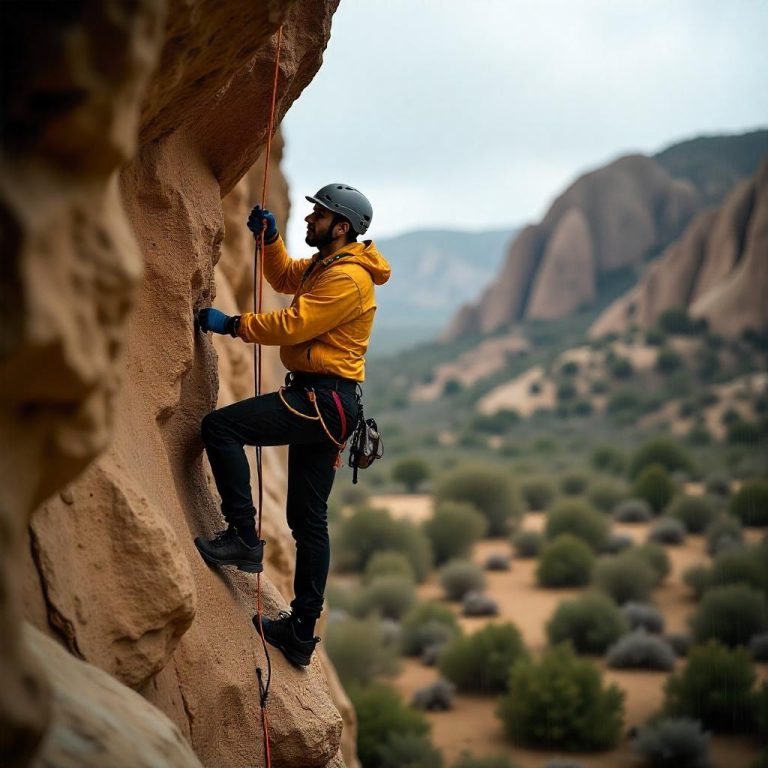Yosemite National Park, located in central California’s Sierra Nevada Mountains, is a global icon for rock climbing, renowned for its towering granite walls, diverse routes, and rich climbing history. Whether you’re a beginner seeking accessible climbs or a seasoned big wall climber aiming for legendary ascents, Yosemite offers an unparalleled climbing experience. This guide explores the park’s best rock climbing routes, its geographic context, unique attractions, reasons for its popularity, and essential considerations for climbers.
Geographic Location
Yosemite National Park spans 759,620 acres in central California, approximately 4 hours from San Francisco and 8 hours from Las Vegas. The park is accessible via Highways 120, 140, and 41, with Yosemite Valley and Tuolumne Meadows serving as the primary climbing hubs. Yosemite Valley, at an elevation of about 4,000 feet, is home to iconic formations like El Capitan and Half Dome. Tuolumne Meadows, situated at 8,000 feet, offers a high-altitude alpine climbing experience. Note that Tioga Pass (Highway 120), connecting Tuolumne Meadows to the eastern Sierra, is typically closed from mid-October to late May due to snow. Climbers can use public transit options like YARTS from Merced or Amtrak connections from San Francisco for eco-friendly access.
Unique Attractions
Yosemite’s climbing allure lies in its dramatic granite formations, diverse climbing styles, and stunning natural surroundings. Key attractions include:
- El Capitan: A 3,000-foot granite monolith, El Capitan is the world’s premier big wall climbing destination. Its sheer face hosts iconic routes like The Nose and Freerider, drawing climbers for both aid and free climbing challenges.
- Half Dome: Rising nearly 5,000 feet above the valley floor, Half Dome’s Snake Dike and other routes offer breathtaking views and moderate to challenging ascents.
- Tuolumne Meadows: Known for its golden granite domes, Tuolumne features knobbed slabs, sharp cracks, and alpine scenery, with climbs like Fairview Dome offering a serene contrast to the bustling Valley.
- Bouldering and Short Routes: Areas like Camp 4 and Cathedral Rocks provide world-class bouldering and single- to multi-pitch routes, catering to all skill levels.
- Scenic Beauty: Climbers are immersed in Yosemite’s meadows, waterfalls, and forests, with vistas of landmarks like Vernal and Nevada Falls enhancing the experience.
Reasons for Popularity
Yosemite’s status as a climbing mecca stems from its historical significance, variety of routes, and global recognition:
- Climbing History: Yosemite is the birthplace of modern rock climbing, with milestones like the first ascent of El Capitan’s The Nose in 1958 by Warren Harding and the first free solo of El Capitan by Alex Honnold in 2017. Films like Free Solo and The Dawn Wall have cemented its fame.
- Route Diversity: From single-pitch sport climbs to multi-day big wall routes, Yosemite offers over 750 free climbing routes and 350 big wall routes, ranging from 5.4 to 5.14. Crack climbing dominates, but slabs, face climbs, and bouldering are abundant.
- World-Class Granite: The park’s polished granite provides exceptional friction and durability, ideal for trad and aid climbing.
- Community and Culture: Camp 4, a historic walk-in campground, is a hub for climbers, fostering a vibrant community. The Ask a Climber program, supported by Yosemite Conservancy, allows visitors to learn from climbing rangers.
- Accessibility: Proximity to major cities, guided services like Yosemite Mountaineering School (YMS), and beginner-friendly options make Yosemite approachable for novices and experts alike.
Best Rock Climbing Routes in Yosemite National Park
Here are six must-climb routes in Yosemite, selected for their quality, accessibility, and appeal across skill levels:
- The Nose (El Capitan)
- Grade: 5.9 C1 (aid) or 5.14a (free)
- Length: 31 pitches, ~2,900 feet
- Description: The most famous big wall climb in the world, The Nose follows the prominent prow of El Capitan. It demands endurance, technical skill, and commitment, typically taking 3–5 days for most parties. The route’s historical significance and stunning exposure make it a bucket-list climb.
- Best For: Experienced aid or free climbers with big wall training.
- Time Estimate: 3–5 days (speed record: ~2 hours).
- Snake Dike (Half Dome)
- Grade: 5.7 R
- Length: 8 pitches, ~800 feet
- Description: A moderate yet exhilarating climb on Half Dome’s southwest face, Snake Dike features runout slab climbing and spectacular views. The approach involves a 6-mile hike, and the descent is 9 miles.
- Best For: Intermediate climbers comfortable with runouts and long approaches.
- Time Estimate: 10–12 hours round trip.
- Absolutely Free (Royal Arches Area)
- Grade: 5.9
- Length: 3 pitches, ~400 feet
- Description: This classic trad route offers splitter hand cracks and finger lie-backs with views of Half Dome and Royal Arches. It’s a great introduction to Yosemite’s granite crack climbing.
- Best For: Beginner to intermediate trad climbers.
- Time Estimate: 4–6 hours round trip.
- Bishops Terrace (Church Bowl)
- Grade: 5.8
- Length: 1–2 pitches, ~200 feet
- Description: A popular crack climb known for its accessibility and quality, Bishops Terrace can be climbed in one pitch to avoid crowds. Its proximity to Yosemite Valley makes it ideal for a quick session.
- Best For: Beginners transitioning from gym to outdoor climbing.
- Time Estimate: 2–4 hours round trip.
- The Surprise (Glacier Point Apron)
- Grade: 5.8
- Length: 3–5 pitches, ~500 feet
- Description: This route features a fun finger crack that briefly disappears into a slab section, offering a mix of crack and face climbing. It’s a great multi-pitch option for those new to Yosemite.
- Best For: Novice multi-pitch climbers.
- Time Estimate: 4–7 hours round trip.
- Fairview Dome (Tuolumne Meadows)
- Grade: 5.9 (Regular Route)
- Length: 8–10 pitches, ~1,000 feet
- Description: A classic Tuolumne climb, the Regular Route on Fairview Dome features knobbed granite and sustained crack climbing in an alpine setting. Its high-altitude views are unmatched.
- Best For: Intermediate climbers seeking a multi-pitch alpine experience.
- Time Estimate: 6–8 hours round trip.
Climber Considerations
Before climbing in Yosemite, keep these critical factors in mind to ensure safety and enjoyment:
- Permits: A free wilderness climbing permit is required for all overnight big wall climbs (e.g., El Capitan, Half Dome). These are available via self-registration with no quotas, helping rangers track usage and ensure compliance with waste disposal regulations. Day climbs do not require permits.
- Seasonal Conditions: Yosemite Valley is best climbed in spring (March–May) and fall (September–November) due to moderate temperatures. Summer can be hot, making Tuolumne Meadows ideal (accessible June–September). Winter climbing is possible at lower elevations (e.g., Pat and Jacks Cliff).
- Safety and Skills: Yosemite’s routes often feature long, runout sections, polished granite, and old-school grading (e.g., 5.9 routes may feel harder). Take a course with Yosemite Mountaineering School (209-372-8344) for skills like crack climbing, anchoring, or self-rescue. Helmets are essential due to rockfall risks.
- Gear: Trad climbing dominates, so bring a robust rack with offset nuts and cams for pin-scarred cracks. Consult guidebooks like Yosemite Valley Free Climbs or Yosemite Big Walls for route-specific gear lists.
- Environmental Stewardship: Follow Leave No Trace principles. Store food securely to avoid attracting black bears, and be mindful of wildlife (e.g., bats and snakes in cracks). Properly dispose of human waste on big walls to preserve wilderness character.
- Crowds and Logistics: Popular routes like Bishops Terrace can have queues, so start early. Camp 4 is a climber’s hub but fills quickly; reserve other campgrounds months in advance via recreation.gov. YARTS and park shuttles reduce parking hassles.
- Physical and Mental Preparation: Big wall routes require endurance and mental fortitude. Train for crack climbing and long approaches, and be prepared for exposure on high routes.
Why Climb in Yosemite?
Climbing in Yosemite is more than a physical challenge—it’s a journey through a landscape that has shaped the sport’s history. From the adrenaline of scaling El Capitan to the serene knobs of Tuolumne’s domes, every route offers a unique blend of challenge and beauty. The park’s granite, combined with its vibrant climbing community and bucket-list status, makes it a must-visit for climbers worldwide. Pack your rack, book your permit, and prepare for an unforgettable adventure in Yosemite National Park.
Essential Tips for Climbing in Yosemite
Preparation is critical for a safe and enjoyable Yosemite climb. Here are key considerations:
- Permits: Overnight big wall climbs (e.g., El Capitan, Half Dome) require free wilderness permits, available via self-registration at ranger stations. Day climbs need no permits.
- Best Seasons: Spring (March–May) and fall (September–November) offer mild Valley temperatures (50–70°F). Tuolumne Meadows shines in summer (June–September) but closes in winter. Winter climbing is viable at lower elevations like Pat and Jacks Cliff.
- Safety: Yosemite’s old-school grading (e.g., 5.8 feeling like 5.9) and runout routes demand strong trad skills. Rockfall risks necessitate helmets. In 2023, NPS reported 12 climbing-related incidents, emphasizing preparation.
- Gear: Bring a trad rack with offset nuts and cams for pin-scarred cracks. Guidebooks like Yosemite Big Walls detail route-specific needs.
- Training: Yosemite Mountaineering School (209-372-8344) offers courses on crack climbing, anchoring, and self-rescue, ideal for novices.
- Logistics: Campgrounds fill fast; book via recreation.gov 5 months in advance. Camp 4 is walk-in but competitive. Park shuttles ease access.
- Environmental Care: Follow Leave No Trace. Secure food from black bears (1,200 in the park, per NPS). Use waste bags on big walls.
Planning Your Yosemite Climbing Trip
A successful Yosemite climbing trip requires careful planning:
- Accommodation: Reserve campgrounds like Upper Pines ($36/night) or lodges ($150–$300/night) early. Camp 4 ($10/night) is climber-friendly but first-come, first-served.
- Guided Options: Yosemite Mountaineering School offers guided climbs ($150–$600) and skill workshops, perfect for beginners or big wall prep.
- Gear Rentals: YMS in Curry Village or Tuolumne Meadows rents racks, ropes, and shoes ($20–$50/day).
- Resources: Use Yosemite Valley Free Climbs, Yosemite Big Walls, or the Mountain Project app. NPS’s Ask a Climber program offers ranger-led talks.
With 80% of climbers visiting Yosemite Valley (NPS data), early planning avoids crowds and ensures spots.
Conclusion
Yosemite National Park is more than a climbing destination—it’s a legacy of granite, grit, and glory. From the heart-pounding pitches of The Nose to the approachable cracks of Bishops Terrace, its routes offer adventure for every climber. With 800+ routes, world-class granite, and a vibrant community, Yosemite remains the gold standard for rock climbing. Plan your trip with care, respect the environment, and embrace the challenge. Ready to climb? Visit www.nps.gov/yose for permits, book campsites at recreation.gov, or contact Yosemite Mountaineering School (209-372-8344) to start your journey. Share your favorite Yosemite route in the comments and inspire fellow climbers!




